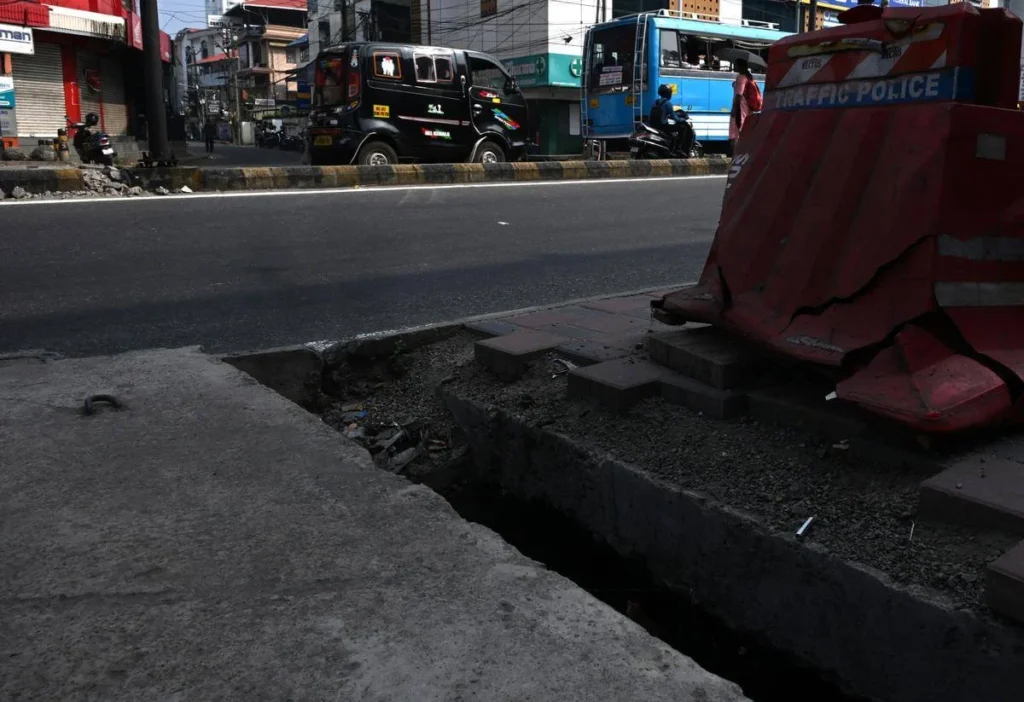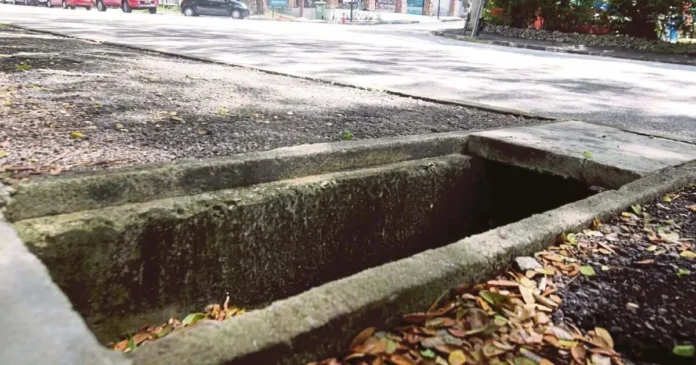Introduction
Kochi’s Uncovered Drains are becoming a significant safety concern, with the Kerala High Court (HC) recently holding city officials accountable for potential accidents. The poor maintenance of M.G. Road, Banerji Road, and Madhava Pharmacy Junction has drawn judicial scrutiny. Pedestrians, including children and elderly individuals, face daily risks while walking along these roads.
This issue not only raises concerns about safety but also highlights broader inefficiencies in urban planning and civic administration. In this article, we explore the implications of the court’s stance, examine real-life challenges faced by residents, and discuss potential solutions to enhance pedestrian safety in Kochi.
Why Uncovered Drains & Poor Footpaths Are a Major Concern
The Kerala HC has emphasized that the negligence of public officials regarding road and drainage maintenance cannot be tolerated. The absence of proper slabs over drains and uneven footpaths pose serious risks to pedestrians. If left unaddressed, these hazards could lead to severe injuries or fatalities. Parents are hesitant to allow their children to walk alone in these areas due to the heightened danger.
Beyond the physical risks, this issue has environmental and sanitation consequences. Open drains contribute to water stagnation, fostering mosquito breeding and increasing the risk of vector-borne diseases like dengue and malaria. Additionally, during monsoons, these open drains overflow, worsening waterlogging and making roads even more hazardous.
Court’s Intervention & Official Responses
During a recent hearing, Justice Devan Ramachandran warned that officers and engineers would be held personally responsible for any accidents caused by neglected infrastructure.
- The Public Works Department (PWD) assured the court that they would investigate the issue.
- Construction of new footpaths along M.G. Road has been tendered, but progress remains slow.
- Amicus curiae S. Vinod Bhatt reported that missing slabs and broken footpaths continue to threaten public safety.
Despite these assurances, on-ground conditions remain largely unchanged. Residents and activists have repeatedly raised concerns about the slow pace of implementation. Local businesses near these hazardous areas have also reported a decline in foot traffic due to safety concerns.

The Current State of Key Locations
- M.G. Road & Banerji Road: Several uncovered drains create high accident risks. Pedestrians are often forced to walk on the road, risking collisions with vehicles.
- Madhava Pharmacy Junction: Slabs over drains remain missing, despite being a prime location for urban development. The court criticized authorities for allowing valuable public spaces to deteriorate.
- Government Ayurveda Hospital, Kacheripady: The absence of footpaths forces pedestrians onto the busy road, significantly increasing accident risks.
- Perandoor Canal Area: Large cleaning equipment remains abandoned, blocking walkways and contributing to further public inconvenience.
Potential Solutions for Safer Infrastructure
To prevent future accidents, authorities must implement the following measures:
- Immediate Covering of Open Drains: Install durable slabs with anti-slip surfaces to ensure pedestrian safety.
- Regular Maintenance & Inspections: Establish routine audits for footpath and drainage conditions. A public reporting system should be set up for quicker response times.
- Enhanced Urban Planning: Utilize vantage points like Madhava Pharmacy Junction to create safe, well-maintained public spaces. Public-private partnerships could be explored for improved infrastructure investments.
- Public Accountability & Citizen Participation: Introduce a grievance redressal system for citizens to report hazardous conditions. Encourage local organizations to collaborate in maintenance efforts.
- Stricter Penalties for Negligence: Hold government officials and contractors accountable if timely action is not taken. Imposing financial penalties for subpar work can improve infrastructure standards.
- Improved Waste Management: Ensure that open drains do not become dumping grounds for garbage, reducing clogging and overflow risks during heavy rains.
- Smart City Solutions: Leverage technology for better urban planning—CCTV monitoring, AI-based hazard detection, and public feedback apps could streamline infrastructure oversight.
Conclusion
The Kerala HC’s intervention underscores the urgent need for improved urban infrastructure in Kochi. Without timely action, the city risks continued safety threats to pedestrians. The court’s strong stance is a wake-up call for local authorities to act immediately rather than wait for a tragedy to unfold.
Ensuring well-maintained roads and footpaths is not just a matter of infrastructure—it is about preserving lives, enhancing public health, and fostering a city that is accessible to all. Residents, activists, and officials must collaborate to create a more pedestrian-friendly urban environment.
What do you think? Have you faced safety challenges due to Kochi’s uncovered drains? Share your thoughts and suggestions in the comments!


